The Maus Super Heavy Tank
The Panzerkampfwagen VIII Maus (German for mouse) is huge. The only surviving example is at the Kubinka tank Museum outside Moscow, Russia. It does not have an engine or much equipment left inside the chassis.
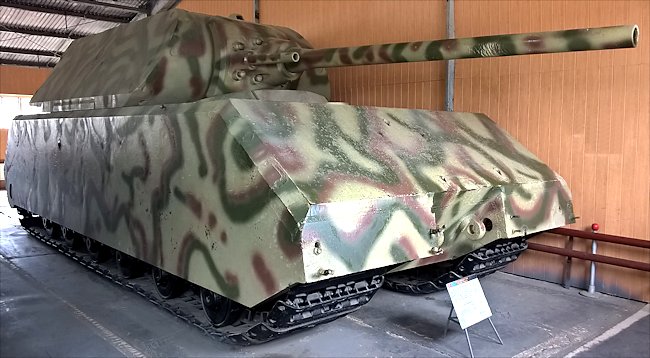
Location
Take the train from Moscow's Belorusskaya Railway Station, in the north west of the city, to Kubinka. It is about an hours train journey. It is a direct service, no need to change, and the the tickets are cheap. Make sure you print off a list of station names so you can check off where you are and get ready to get off the train at Kubinka. The station names are not always easy to read or see.
Although this military town has been active for over 80 years it has a rundown look to it. You can walk to the museum but there is the equivalent of a motorway crossing your route. There are no pedestrian crossings over it. There are a number of taxi stands near the station. They are very cheap and honest. I tried to give the driver a big tip but he refused. Ask for his card so you can ask the Museum gate staff to call his company when you are finished at the Museum to get back to the railway station.
Development
This tank is in fact two prototypes merged into one vehicle. Only two were produced of which one was incomplete. The Museum's Maus tank chassis was from prototype hull number two (V2) and the turret was from tank number one (V1).
The Germans placed explosive charges in both vehicles to stop them falling into the hands of the enemy. The internal explosion inside the tank chassis caused considerable damage. The Soviets used the lease damaged parts to make one tank.
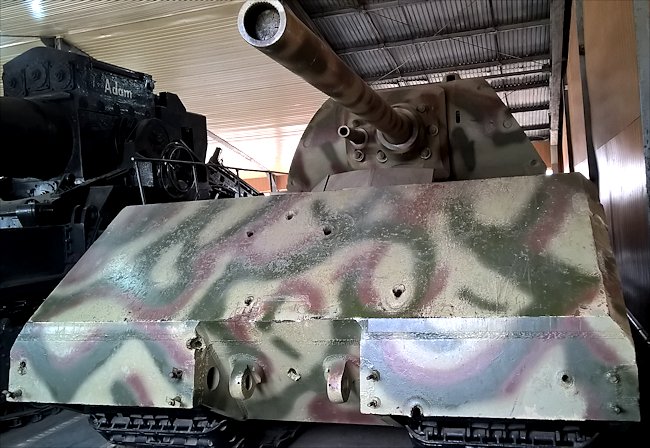
The Maus weighed 188 tonnes and was a very impractical vehicle. Very few bridges could take that weight and the Germany Army pontoon bridges would break apart if a Maus attempted to cross one.
It was envisioned that the tank would be able to ford most smaller streams and rivers. A solution was being worked on that would enable the Maus to submerge and drive along the bottom of deeper rivers using a large snorkel.
The Maus was not a fast tank. The extreme weight of this combat vehicle meant that it only had a top road speed of 22 km/h (14 mph). Its cross country speed was considerably slower.
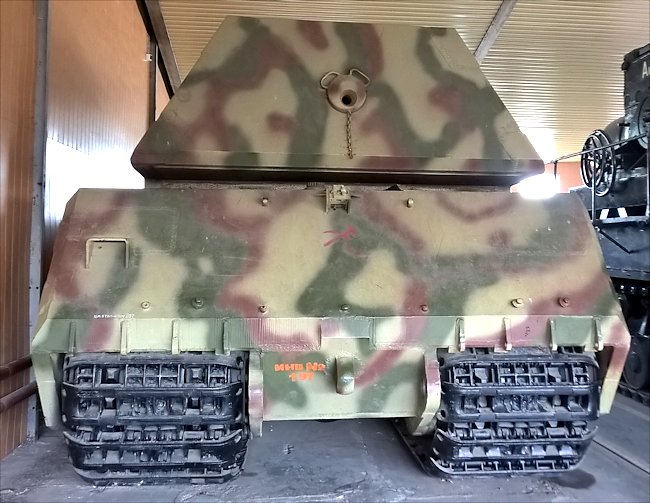
It had a maximum of 460 mm of armour protection around the gun mantlet, 240 mm on the front of the turret and 220 mm on the turret side and rear. The front of the tank hull had 220 mm of slopping armour and 190 mm of armour on the hull sides and rear.
You will notice a lot of shell hits on the outside of the Maus at Kubinka. These are from German factory workers testing out the strength and weakness of the tanks armour. There is one exception. That is the small hole at the bottom of the front slopping armour plate in the centre. That is from a Russian 128mm shell.
To give you an idea of how thick the protective armour of the Maus has, just look at the armour joint at the front of the vehicle. This thick armour plating also covers the front and side of the track.
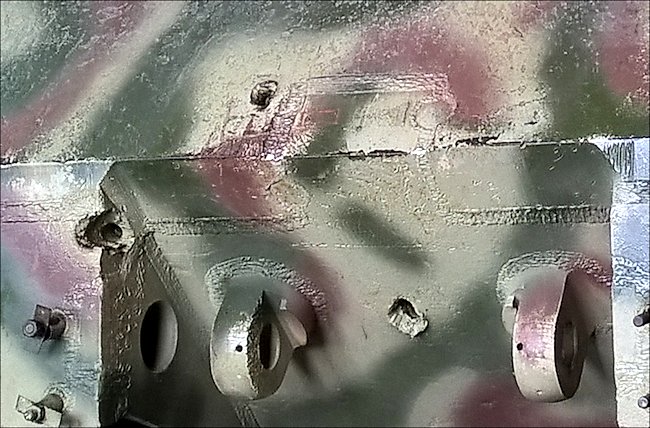
Normally the tank crew would be able to remove the side track protective armour to perform maintenance on the track and road wheels on the battlefield. This was out of the question on the Maus Tank.
The only track maintenance the tank crew could perform was to access the track tensioning screw bolt at the front of the track. If it went over a mine it would have to be abandoned or act as a stationary gun emplacement until the engineers could get to it with specialised equipment.
There are circular holes on the side of the armoured skirt to take the engineers giant heavy lifting jacks. They are covered with a round disk that has six small holes drilled around the edge.
When it was captured it had a Soviet red hammer and sickle painted on its side and rear. The idea of this was to confuse any spies. The German tank testing staff wanted to give the impression that they were putting an enemy designed tank through its paces and not a new German designed tank. You can still see the red hammer and sickle painted on the side and rear of the Kubinka Maus. What is strange is that the sickle was painted on the wrong way. Any good spy would have noticed that error.
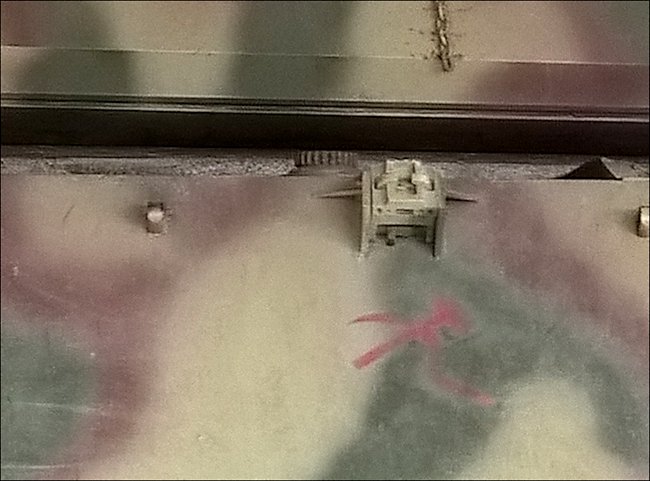
The back of the Maus is the best place to see how wide the tracks are. The width was necessary to decrease the amount of downward force exerted on the ground. You can also see the thickness of the armour skirt by looking at the exposed welded joints.
The tank designers had considered placing a flame thrower at the back of the tank to protect it from enemy infantry. It was not fitted to this prototype. There are three pistol ports for the crew to fire small arms out of for close protection in the sides and rear of the tank.
The hole in the rear of the turret was so the 128mm rounds could be loaded into the tank from the back of a lorry without having to be carried to the top of the turret. Used shell casings could also be expelled from the tank interior by the crew without having to be exposed to enemy small arms fire.
There is nothing on the front or rear of the tank to help the crew climb up onto the tank. On most tanks the crew could climb on top of the track wheels or use a handle. On the Maus' slab exterior there is nothing. You need a ladder or another member of the crew to give you a bunk-up.
The Maus was powered by a big BMW V12 1200hp diesel engine The driver would sit in the front of the vehicle on the left and next to him was the radio operator. They had an emergency escape hatch in the floor of the tank. There was a door behind the driver that gave access to the engine compartment where simple maintenance measures could be performed.
Because of the size of the 128mm KwK 44 L/55 cannon most people miss the fact that the turret is also fitted with a 75mm KwK 44 L/36.5 cannon. The 200 rounds of ammunition for the 75mm gun was stored at the front of the turret whilst the main guns 32 shells were kept at the rear. A coaxial 7.92 mm MG 34 machine gun was also fitted on the other side of the main gun.
WW2 tank books

